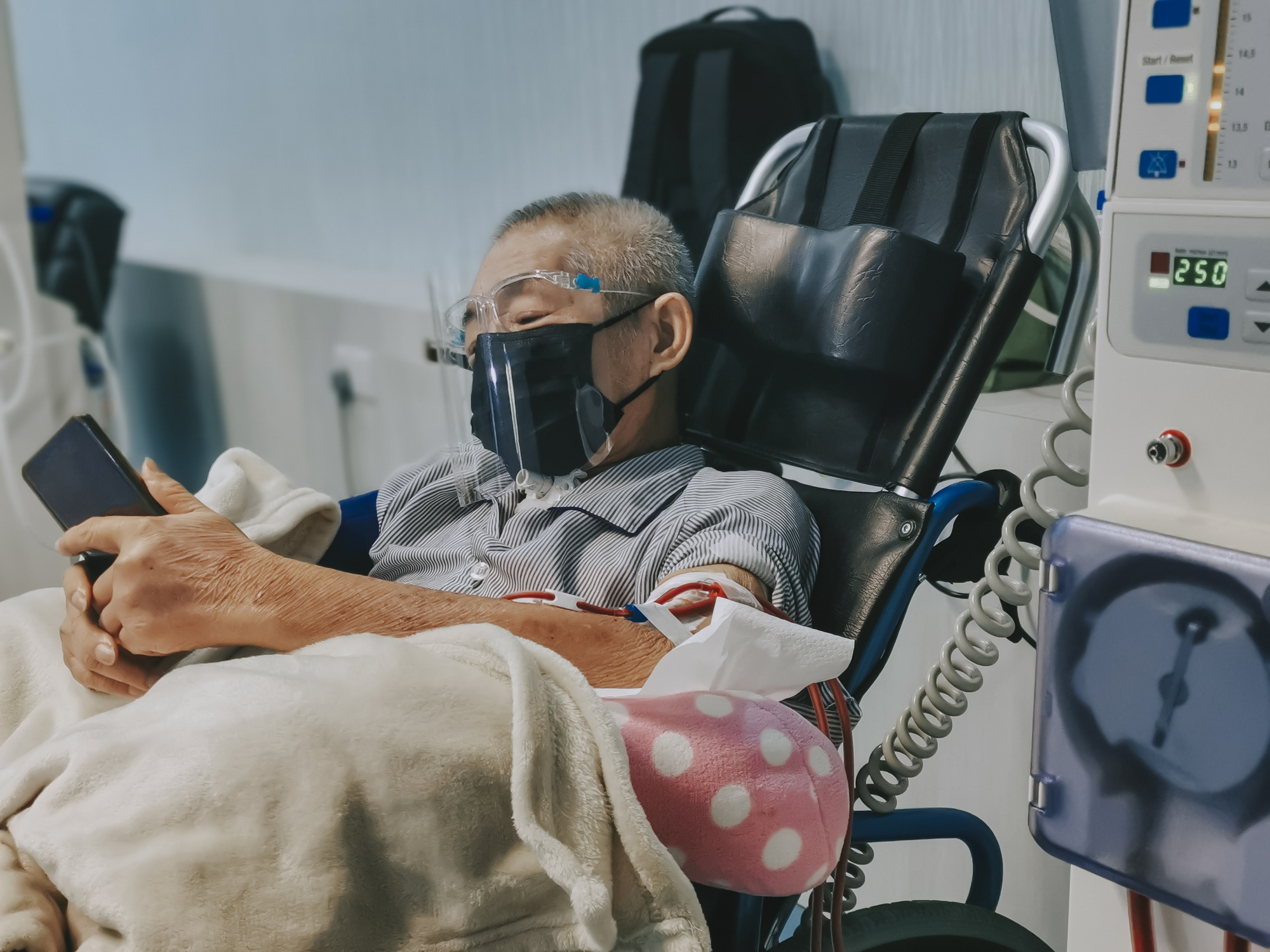
The kidneys have several important jobs. The bean-shaped organs that come in a set clean our blood, filter waste, and get rid of excess fluid. They also produce hormones, which keep our bones strong and help us make red blood cells. To live, we need at least one of our kidneys to be functioning well.
Many diseases that are common today like diabetes and high blood pressure affect our kidney health. If the organs lose enough function, the kidney either needs to be replaced or something else must step in and take over its responsibilities.
Dialysis is a lifesaving treatment that keeps the body in balance when the kidney no longer works well enough. Every year, nearly 800,000 people in the U.S. are either on dialysis or have a kidney transplant. In addition to removing extra fluid and waste products from the blood, dialysis can correct high acid levels and remove certain poisons.
A nephrologist is a doctor who specializes in treating both acute and chronic kidney disease. If you have lost some kidney function and are at risk of going on dialysis in the future, you probably have a lot of questions. Ellen Lunenfeld, MD, a nephrologist at Summit Health, explains how the treatment works, what you need to do to prepare, and when dialysis may be right for you.
How do you know when it is time for dialysis?
There are several reasons why your nephrologist may say that you need to start dialysis. It would be advised if you begin having symptoms like nausea, vomiting, poor appetite, or confusion. This is caused by uremia — a dangerous condition that occurs when waste products build up in your blood. If the body holds onto too much fluid, you may also start to have trouble breathing. Another sign that you may need to start dialysis is when there are changes to the levels of electrolytes in your blood.
Will dialysis fix my kidneys? If I go on dialysis, will I need treatment forever?
Dialysis can’t heal the kidneys, unfortunately. But the good news is that the treatment is not always permanent. Sometimes, depending on the cause of the kidney failure, the organs may recover enough that you can function without dialysis. This is less likely to happen when you have had kidney disease for a long time.
There are two main options for treatment: hemodialysis and peritoneal dialysis. How do they work?
Peritoneal dialysis uses the natural lining of the abdomen, also known as the peritoneum, to filter and clean the blood. Before you start dialysis, a flexible tube called a catheter is placed into the abdomen. During the treatment, a dialysis solution is placed through the catheter into the abdomen. This special solution absorbs the extra waste and fluid that the kidney would normally filter. It is then removed through the catheter and discarded.
In hemodialysis, where blood is circulated outside your body in a machine, a fistula or a graft is preferred over a catheter because it lasts longer and is less likely to become infected; however, these methods also need to be surgically placed several months before you start dialysis. If you need dialysis immediately, your doctor will probably suggest a catheter.
How do I know which type of dialysis is right for me?
Your doctor will partner with you to decide which option is best. They will consider your overall health, kidney disease, lifestyle, and personal preferences. If you are at the dialysis center, our team will explain exactly what is happening every step of the way. Or, if you are receiving dialysis at home, they will teach you how to administer the treatment on your own.
Peritoneal dialysis is usually done every day at home, while hemodialysis is typically administered at a dialysis center about three times a week. While peritoneal dialysis offers more constant filtration and is less limiting, it is not as beneficial for advanced kidney disease.
What does dialysis feel like? Is it uncomfortable?
What to expect on that first day will depend on the type of treatment you choose. Dialysis itself is not painful, but the needles that are placed into the skin with hemodialysis can be uncomfortable. We often apply a numbing cream to the fistula or graft before the treatment to make the patient more comfortable. Home hemodialysis is an option for some individuals and may offer greater flexibility and fewer food restrictions.
Are there risks or side effects?
As with any treatment, there are risks and side effects; however, if your doctor recommends that you start dialysis, it is because there are no other options. You need dialysis to save your life.
One of the biggest risks associated with peritoneal dialysis is peritonitis, or an infection in the abdomen. Administering the treatments carefully, the way you were instructed, can help prevent infection.
Hemodialysis can cause low blood pressure, bleeding, and infection. The possibility of infection is more common in people who use a catheter for dialysis than in those who have a fistula or a graft.
Will dialysis improve my quality of life?
Many people feel better on dialysis, especially if they were experiencing symptoms from kidney disease. Patients who have other significant medical problems may not see much improvement.
